The U.S. EPA issued a final rule on Feb. 22 that will allow E15 to be sold year-round in Illinois, Iowa, Minnesota, Missouri, Nebraska, Ohio, South Dakota and Wisconsin beginning in 2025. The ethanol industry has welcomed the rule but is expressing disappointment in its delayed implementation.
The effort to implement the Midwest E15 rule has been ongoing for nearly two years. Several Midwestern governors in April 2022 filed petitions with the EPA requesting that the agency remove the 1-psi Reid vapor pressure (RVP) waiver for summer gasoline-ethanol blended fuels, which would effectively allow E15 to be sold year-round within their states.
The EPA is required by statute to respond to such petitions within 90 days. However, it took the agency nearly two years to finalize action on the Midwest E15 requests.
The agency released a proposed rule to implement the requested change in February 2023. A comment period on the proposed rule was open through April 20, 2023. As part of a lawsuit filed by the attorneys general of Iowa and Nebraska, the EPA said it planned to finalize the rulemaking by March 28, 2024. The agency has now met that deadline.
The Midwest governors’ petitions originally sought an effective date that would have allowed E15 to be sold year-round starting with the summer 2022 driving season. The proposed rule released last year initially included an effective date for all eight impacted states of April 28, 2024. The final rule issued by the agency on Feb. 22, however, delays that effective date until April 28, 2025.
ACE Urges SAF Interagency Working Group to Properly Value Climate-Smart Ag and Apply Real-World Land Use Change
Recently, ACE CEO Brian Jennings sent a letter to members of the SAF Interagency Working Group (IWG) regarding the GREET Model for SAF Lifecycle GHG Emissions under Section 40B of the Inflation Reduction Act. Accompanying ACE’s letter was an analysis prepared by Ron Alverson of the ACE board of directors comparing modeled estimates of land use change (LUC) to what has occurred in the real world.
ACE’s letter was sent to United States Department of Agriculture Secretary Tom Vilsack, Department of Energy Secretary Jennifer Granholm, Environmental Protection Agency Administrator Michael Regan, Federal Aviation Administration Administrator Michael Whitaker, and Department of Treasury Secretary Janet Yellen. These officials compromise the SAF Interagency Working Group.
ACE’s letter cautions President Biden’s pledge that farmers would be providing 95 percent of SAF in the next 20 years could go unfulfilled if 40B GREET artificially inflates LUC and fails to properly value climate-smart agriculture practices.
“As the much-anticipated deadline nears for 40B GREET for SAF, I stress the importance of GHG credits for climate-smart agriculture practices and a final methodology based on real-world observations of land use change instead of inflated assumptions generated from unreliable economic models,” Jennings wrote.
Pearson Fuels Opens 350th E85 Site
Pearson, California’s largest E85 distributor, recently opened its 350th E85 site in the Los Angeles area and expects to open at least 120 more E85 fueling sites in California by the end of 2025, a company official said in January.
“I feel confident that we will be opening 60 to 70 retail E85 sites per year over each of the next two years, hence a high degree of confidence that we will hit grow to 500 stations in our California retail E85 network within the next 24 to 30 months,” Doug Vind, the company’s managing member, told OPIS.
The company surpassed its previous annual record by opening 63 new retail E85 sites in 2023, according to Vind, and has another 150 unopened sites under contract that are “in various states of permitting.”
Pearson estimates statewide E85 volumes for 2023 will come in at least 10% above the record 103.5 million gal sold statewide in 2022.
The company says that it blends a significant volume of its E85 “with ultra-low-carbon renewable naphtha, resulting in E85 that is more than 98% renewable.”
“We continue to selectively source blend stocks that reduce the carbon intensity of our E85,” Vind stated.
Lallemand Biofuels & Distilled Spirits Announces Partnership with Braskem Focused on the Development of Bio-based Chemicals
Lallemand Biofuels & Distilled Spirits (LBDS), a leading global fermentation ingredients supplier to
alcohol producers, recently announced a new partnership with Braskem (BM&FBOVESPA: BRKM3, BRKM5 and BRKM6; NYSE: BAK; LATIBEX: XBRK), the largest polyolefins producer in the Americas as well as a market leader and pioneer producer of biopolymers on an industrial scale, to jointly develop renewable chemicals.
The LBDS and Braskem partnership provides a joint technological and commercial framework for the research, development, and commercialization of next-generation bio-based alternatives to traditional fossil fuel-based chemicals. Using LBDS’s biotechnology as a basis, the two companies will collaborate to develop bio-based chemicals for Braskem’s technological and commercial partners, first exploring products for the Solvents segment.
LBDS and Braskem are now in the pilot-scale development phase of the collaboration.
Moran Introduces Farm to Fly Act
Sens. Jerry Moran, R-Kan.; Amy Klobuchar, D-Minn.; Joni Ernst, R-Iowa; Tammy Duckworth, D-Ill.; and Chuck Grassley, R-Iowa, on Jan. 22 introduced the Farm to Fly Act, a bill that aims to accelerate the production and development of sustainable aviation fuel (SAF). Companion legislation was introduced by Rep. Max Miller, R-Ohio, and colleagues in November 2023.
The bill specifically clarifies eligibility for SAF within current USDA bioenergy programs expanding markets for U.S. agricultural crops through aviation bioenergy. It also provides for greater collaboration for aviation biofuels throughout USDA agency mission areas, increasing private sector partnerships. In addition, the bill affirms a common definition of SAF for USDA purposes, including the use of the U.S. Department of Energy’s GREET model to measure lifecycle emissions.



